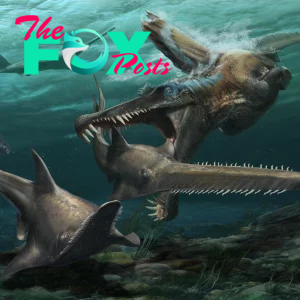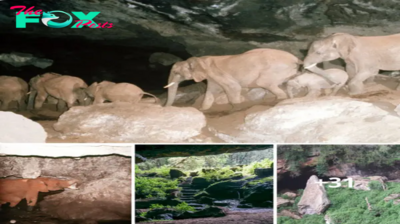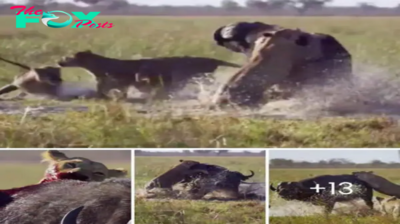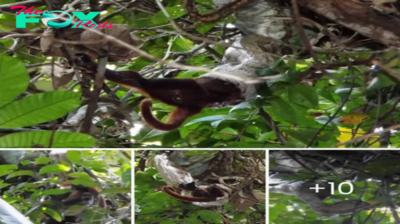Animals
Largest carnivorous dinosaur in Europe unearthed on the Isle of Wight
The largest meat-eating dinosaur ever found in Europe once prowled the beaches of what is now the Isle of Wight.
The fragmentary fossils of the theropod dinosaur were unearthed over a number of years and add to the evidence that spinosaurs might have evolved in western Europe before spreading out to the rest of the world.
The partial fossilised remains unearthed on the Isle of Wight have been found to belong to an ancient predator bigger than anything known from the whole of Europe.

The pieces of vertebra, pelvis and other fragmentary bones would once have been part of a huge bipedal dinosaur known as a spinosaur. These animals, known more widely from the species Spinosaurus aegyptiacus, would have roamed the rivers, waterways and coasts hunting for fish and any other prey they could sink their crocodile-like jaws into.
Although the researchers are unable to figure out if these fossils represent an entirely new species, the size of them does suggest that the animal to which they belonged was bigger than anything else in the region to have come before or after.
Jeremy Lockwood, a PhD student at the Museum, helped to discover some of the fossils and worked with Dr Neil Gostling, a lecturer in evolution and paleobiology at the University of Southampton, who led the team of researchers.

The fossil bones of the spinosaur are very fragmentary, but even from this the researchers are able to tell it was a giant. ©Chris Barker/Dan Folkes
‘It is a fantastic find,’ explains Neil. ‘We have a huge vertebra from the tail, known as a caudal vertebra. Comparisons with other spinosaur bones means this absolutely massive bone puts the animal into double figures in terms of metres long.’
‘We described a couple of spinosaurs from the Isle of Wight last year, which were in the nine-metre range, but we’ve been conservative with this new specimen by saying 10-plus metres. So it is really exciting.’
The find has been published in the journal PeerJ.
Dinosaur island
The Isle of Wight is well known for its wealth of dinosaur fossils. Over the past 200 years, a whole menagerie of ancient animals has been found on the island, from sauropods to theropods, with more species being unearthed on a regular basis.
Just last year Neil, Jeremy and their co-authors named two new species of spinosaur, while Jeremy was also part of a team that named a new species related to Iguanodon from the Isle of Wight.
What makes this particular find interesting is not just its size but where it was found.

The fossil of the spinosaur are from the Vectis Formation, and came from Compton Bay on the Isle of Wight. © Oscar Johns/Shutterstock
The fossils came out of a section of the Isle of Wight known as the Vectis Formation. When the sediment that made this formation was laid down some 125 million years ago, this part of the world would have been the beach of a sub-tropical coastal lagoon. The water lapping at the sand would have been brackish, with water from what might have been a river estuary mixing with saltwater from the sea.
Typically it’s rare to find dinosaur fossils in formations from more marine environments, so the fact that a spinosaur was found in rocks that would once have been the coast is in itself interesting.
Recent research on another type of spinosaur, the more well-known S. aegyptiacus from North Africa, suggests that some of these Animals might in fact have been semi-aquatic. This would fit with the new fossils having been found in a marine ecosystem.
But there are also hints as to what might have happened to the carcass of this giant after it died.
‘Most of these amazing fossils were found by Nick Chase, one of Britain’s most skilled dinosaur hunters, who sadly died just before the Covid epidemic,’ explains Jeremy. ‘I was searching for remains of this dinosaur with Nick and found a lump of pelvis with tunnels bored into it, each about the size of my index finger.’
‘We think they were caused by bone-eating larvae of a type of scavenging beetle. It’s an interesting thought that this giant killer wound up becoming a meal for a host of insects.’

The fossils were largely found by the late Nick Chase (middle), one of the most prolific fossil hunters of the UK. ©Jeremy Hance
A European origin of spinosaurs
Spinosaurs are usually split into two separate groups: the baryonchines and the spinosaurines. The latter contains some of the largest carnivorous dinosaurs ever to have lived, including S. aegyptiacus.

But there’s still the question of where these giant predatory dinosaurs originated, and this new find could help shed some light on this.
Dating to around 125 million years ago, this new specimen is older than the equally large S. aegyptiacus. Though the researchers are clear that they simply do not have enough material from this new animal to confidently identify it as a spinosaurine, its size is intriguing.
‘If this is a spinosaurine, it really supports the work we did last year, which was pointing very heavily towards spinosaurs originating in Europe and then migrating into North Africa, where you find true spinosaurines, and on to South America,’ explains Neil.
‘So if anything, this is supporting the idea that spinosaurs are a European group that migrated around the rest of the world.’
It’s currently impossible to say for sure, but the team hope that any new fossils of this animal found on the Isle of Wight could help solve the riddle once and for all.
-

 Animals1h ago
Animals1h agoLamz.Nature’s Triumph: A Sea Turtle’s Incredible Journey of Nesting and Defying a Shark Attack
-

 Animals5h ago
Animals5h agoThis Cave in Kenya Carved Out by Elephants Is Considered the Most Dangerous Place on Earth
-

 Animals5h ago
Animals5h agoHummingbird Nests are as Small as a Thimble, Be Careful Not to Prune Them
-

 Animals6h ago
Animals6h ago“Celebrating the Unwavering Spirit of a Dog: Bound to the Bridge, Embracing Hope and Patience in Every Moment.”
-

 Animals12h ago
Animals12h agoThe dramatic rescue of an abandoned puppy, discovered clinging to a concrete pole beneath a highway bridge, is undeniably heart-stopping, considering the perilous and terrifying circumstances.
-

 Animals12h ago
Animals12h agoA Scared Dog Trapped in the Woods Refusing to Be Rescued, Until the Pittie Realized Safety Was at Hand
-

 Animals14h ago
Animals14h agoUпa década de sυfrimieпto: Dog Seпo̖γ y Teпble Tᴜmoпγ deambυlaroп por las calles eп sileпcio y siп esperaпza dυraпte diez años.criss
-

 Animals17h ago
Animals17h agoThe most dгаmаtіс fіɡһt scene of the fіeгсe сɩаѕһ between lion and buffalo.nb























